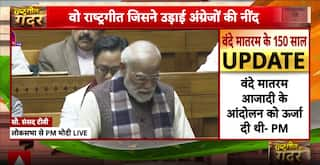What Is Repo Rate And Reverse Repo? Its Impact On Home Loans. Explained
The primary function of the repo rate is to control the amount of money circulating in the economy. When inflationary pressures rise, the RBI increases the repo rate

Repo Rate and Reverse Repo Rate: The Reserve Bank of India (RBI), in a bid to regulate monetary policy and manage inflation, employs various tools, one of which is the repo rate. The repo rate, short for Repurchase Agreement Rate, is the interest rate at which the RBI lends money to commercial banks. This mechanism involves banks selling qualifying securities to the RBI with an agreement to repurchase them at a predetermined price. This arrangement is crucial for maintaining liquidity in the banking system, especially during periods of market volatility.
Understanding the Repo Rate
The primary function of the repo rate is to control the amount of money circulating in the economy. When inflationary pressures rise, the RBI increases the repo rate. A higher repo rate means that borrowing from the central bank becomes more expensive for commercial banks. Consequently, banks are less inclined to borrow funds, leading to a reduction in the money supply. This reduction helps mitigate inflation by slowing down economic activity. Conversely, during economic slowdowns or recessions, the RBI may lower the repo rate to encourage borrowing and stimulate growth.
Current Repo Rate in India
As of June 7, 2024, the RBI has set the repo rate at 6.50 per cent. This rate adjustment reflects the central bank's stance on current economic conditions and its efforts to balance inflation and growth.
Impact of Repo Rate Changes
Changes in the repo rate can have far-reaching effects across various economic segments:
Interest Rates on Loans: A direct consequence of a change in the repo rate is the adjustment in interest rates for different types of loans. For instance, when the repo rate rises, banks typically increase interest rates on personal loans, car loans, business loans, and home loans. This results in higher monthly payments for borrowers. Conversely, a reduction in the repo rate can lead to lower interest rates and decreased monthly payments.
Equated Monthly Instalments (EMIs): EMIs on loans are closely linked to the repo rate. An increase in the repo rate generally leads to higher EMIs, making it more costly for borrowers to repay their loans. A decrease in the repo rate has the opposite effect, lowering EMIs and reducing the repayment burden.
Loan Tenure: The tenure of a loan can also be influenced by changes in the repo rate. With higher interest rates, the loan tenure might extend as borrowers need to adjust their monthly payments. Conversely, lower interest rates can shorten the loan tenure, as monthly payments decrease.
Loan Eligibility: Interest rates directly impact loan eligibility. Lower rates can make higher loan amounts accessible to borrowers due to reduced monthly payments. Conversely, higher rates might limit the loan amount borrowers can qualify for, as their monthly obligations increase.
Affordability: The affordability of loans, including home loans, is affected by changes in the repo rate. Higher rates can make home loans less affordable for potential buyers, while lower rates can ease the financial burden, making homeownership more accessible.
Prepayment and Foreclosure: The cost of prepaying or foreclosing a loan can also fluctuate with changes in the repo rate. Higher rates might lead to increased prepayment and foreclosure charges, making it more expensive for borrowers to pay off their loans early. Conversely, lower rates can reduce these charges, benefiting borrowers who wish to settle their loans ahead of schedule.
Reverse Repo Rate
In contrast to the repo rate, the reverse repo rate is the rate at which the RBI borrows funds from commercial banks. It is used to manage the excess liquidity in the banking system. Banks park their surplus funds with the RBI for a short duration, earning interest at the reverse repo rate. This rate serves as a tool for the RBI to control the money supply and stabilise financial markets.






































